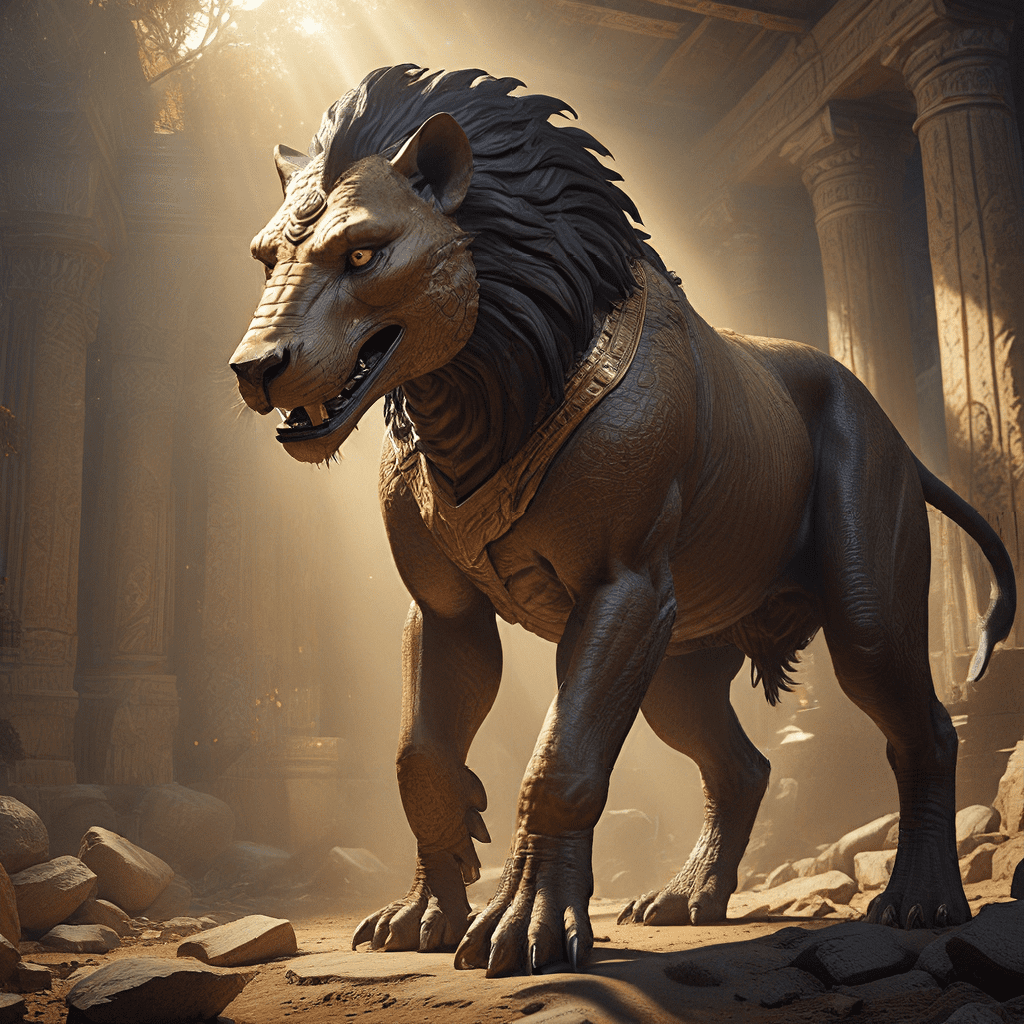The Demon of the Underworld: Unveiling the Mythological Terror of Ammit
1. Introduction: The Realm of the Dead and Its Guardians
Ancient Egyptians believed in a complex afterlife journey. Upon death, the soul traveled to the underworld, known as Duat, a realm filled with challenges and trials. This journey was crucial to their belief system, determining the fate of the deceased in the next life.
Navigating the Duat required the soul to face various guardians, each wielding power over different aspects of the underworld. Anubis, the jackal-headed god, guided the dead through the trials, while Thoth, the god of wisdom and magic, weighed the hearts of the deceased. Osiris, the king of the underworld, presided over the final judgment.
However, one guardian stood out for its terrifying nature: Ammit, the devourer of souls. This monstrous entity lurked within the underworld, waiting to claim those deemed unworthy of eternal life.
2. The Horrifying Form of Ammit
Ammit, a creature of pure malice, embodied the fears of the ancient Egyptians. Its grotesque form combined elements of the most dangerous and feared animals in their world. The head of a crocodile, the body of a lion, and the hindquarters of a hippopotamus formed a terrifying composite. Each aspect added to its menacing presence.
The crocodile, symbol of death and destruction in the Nile River, represented the devouring nature of Ammit. The lion, revered as the “king of beasts,” symbolized power and strength, emphasizing Ammit’s formidable nature. The hippopotamus, known for its aggressive nature and powerful jaws, added to the beast’s ferociousness.
This combination of animalistic features made Ammit a truly terrifying figure, its appearance serving as a constant reminder of the consequences of an unrighteous life.
3. Ammit’s Role in the Weighing of the Heart Ceremony
The afterlife journey culminated in the “Weighing of the Heart” ceremony, a crucial event where the soul’s fate was determined. The heart, considered the seat of a person’s character, was weighed against the feather of Ma’at, the goddess of truth and cosmic order.
Ammit played a central role in this ceremony. She stood by the scales, eagerly awaiting the outcome. If the heart proved heavier than the feather, signifying a life of wrongdoing, Ammit would devour the soul. This act symbolized the ultimate punishment for a life devoid of righteousness.
The scales and the feather of Ma’at served as symbols of justice and balance, highlighting the importance of living a life aligned with cosmic order. The fear of Ammit acted as a moral compass, encouraging individuals to strive for righteousness and avoid actions that might lead to a heavy heart.
4. The Consequences of a Heart Found Unworthy
The fate of those whose hearts were found heavier than the feather was grim. Ammit, the devourer, awaited their arrival, ready to consume them and condemn them to eternal damnation.
The act of being devoured by Ammit was a terrifying image, symbolizing the ultimate destruction of the soul. It represented a complete loss of identity and existence, leaving no hope for the afterlife. The Egyptians called this the “Second Death,” a fate worse than physical death.
The fear of this horrific end served as a powerful deterrent against sin and wrongdoing, highlighting the importance of living a righteous life. Ammit’s presence ensured that actions had consequences, even beyond the physical realm.
5. Ammit’s Symbolic Importance: A Force of Justice and Order
While Ammit was a terrifying figure, she also played a crucial role in upholding cosmic order. The Egyptians believed in Ma’at, a concept encompassing truth, justice, and balance. Ammit represented the enforcement of Ma’at’s principles in the underworld.
Her role in the Weighing of the Heart ceremony ensured that those who strayed from the path of righteousness faced the consequences. The fear of Ammit served as a powerful motivator for the living, prompting them to align their actions with the principles of Ma’at.
In this way, Ammit, while a fearsome creature, also served as a force of justice, reminding individuals of the importance of living a life aligned with cosmic order and ensuring that the consequences of their actions followed them even after death.




